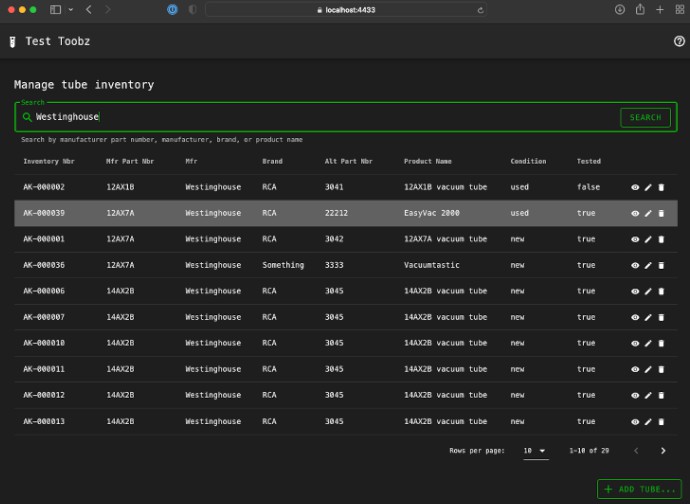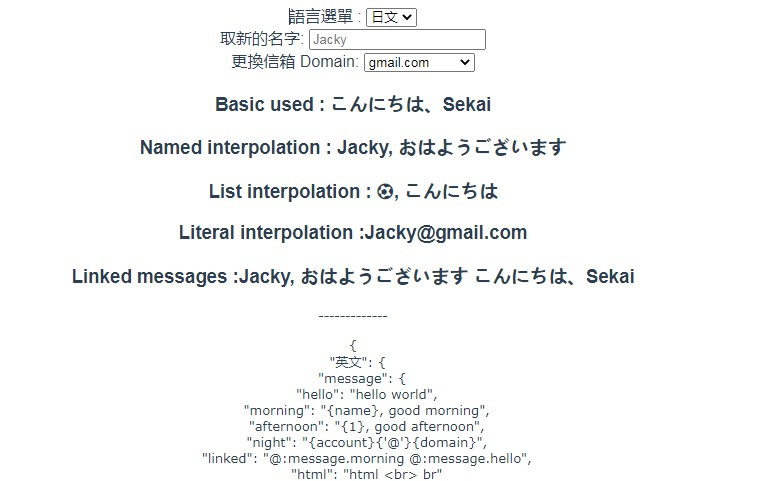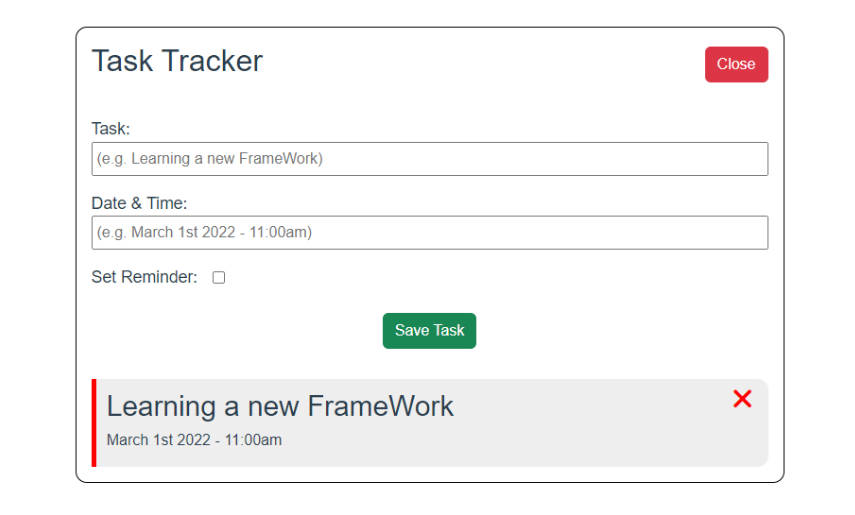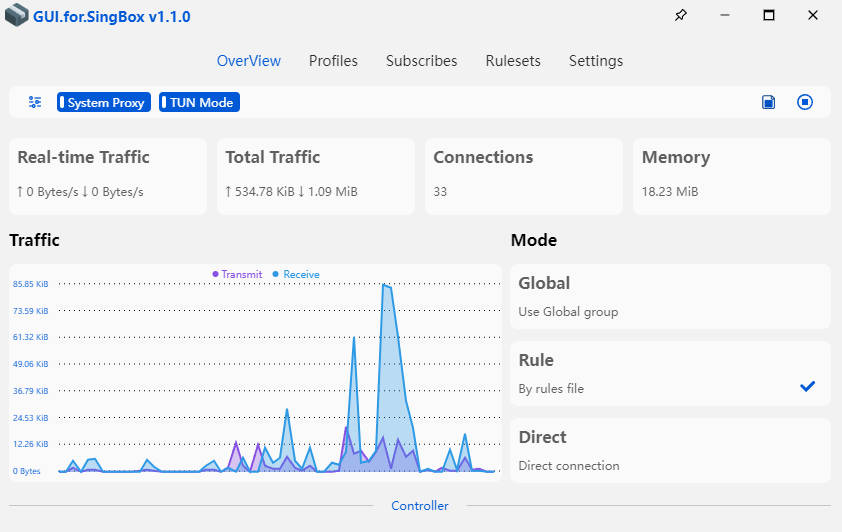toobz-web
Web-based GUI for an inventory management system used to track loads of old vacuum tubes.
A friend of mine recently bought out a stash of old vacuum tubes at the estate sale of a local electronics shop owner. This application is designed to help him fight his natural tendency to let them all pile up for decades in an unsorted mess in the same way that the shop owner had done. Not because such clutter is necessarily a bad thing, but because it takes up space in his apartment that he could otherwise be dedicating to the accumulation and investigation of more fun toys.
Of course, it could all be probably be handled with a big spreadsheet, too. But where’s the fun in that?
Features
- Mobile friendly
- Flexible search
- Global keyboard shortcuts
- Store arbitrary facts about each inventory item, including web links
- Autocomplete common fields for rapid data entry
- Automatically assign unique inventory number to each item
- Store test status and results for each tube
- Built-in Google search to quickly look up photos or datasheets and such
- Support for photos (links to images on the web or take pictures from the camera on your device)
- Automatically generate QR codes for each inventory item
- Printable labels
Screenshots
Dependencies
- A running instance of
toobz-apithat can be accessed from the browser
Configuration
The location of the toobz-api service needs to be accessible from the browser and set in src/config.js
export default {
apiBase: "https://your.service.here:port"
}
Installing
yarn install
Development
The following transpiles and runs under a local web-server with hot-reload capabilitity for development.
yarn serve
The dev server configuration is located in src/vue.config.js and is currently configured to serve as HTTPS with a particular pair of certificate files. You can, of course, change these settings, including setting https: false if you wish.
However, note that
- Browsers will silently block the camera access functionality without HTTPS unless it is running under localhost. Everything else should continue to work fine, however.
- If your web server is running under HTTPS, the API will also need to be available (and configured to be accessed via, see above) HTTPS as well, or else the AJAX calls will be blocked and the app will not work at all.
For further details on configuring SSL certificates for dev, see SSL Certificates.
Production
The following transpiles and minifies for production.
# using yarn
yarn build
# or, using the Makefile wrapper
make build
The results will be written to the dist folder and can be served by any static web server.
Take care to serve over HTTPS (see the limitations above otherwise).
Containers
A basic Dockerfile is provided for you to use if you like. Don’t if you don’t.
The container uses Nginx to serve the statically generated production build files. It assumes HTTPS, and provides a suitable simple configuration
file at docker/default.conf which start-container.sh will mount to the correct place.
So a typical workflow might look like
make build
cp dotenv .env-container # and edit as needed
./start-container.sh
Technologies used
- Vue.js because it’s about the only frontend web framework that doesn’t make me want to kill myself
- Vuetify because John has done a really nice job with this
- Axios because I’m lazy and it’s there
- easy-vue-camera because it makes interacting with the device camera painless
- vue-qr because QR code generation
- Nginx because that’s how I roll
- Docker because containers are convenient, and Docker is, well, adequate
License
MIT








